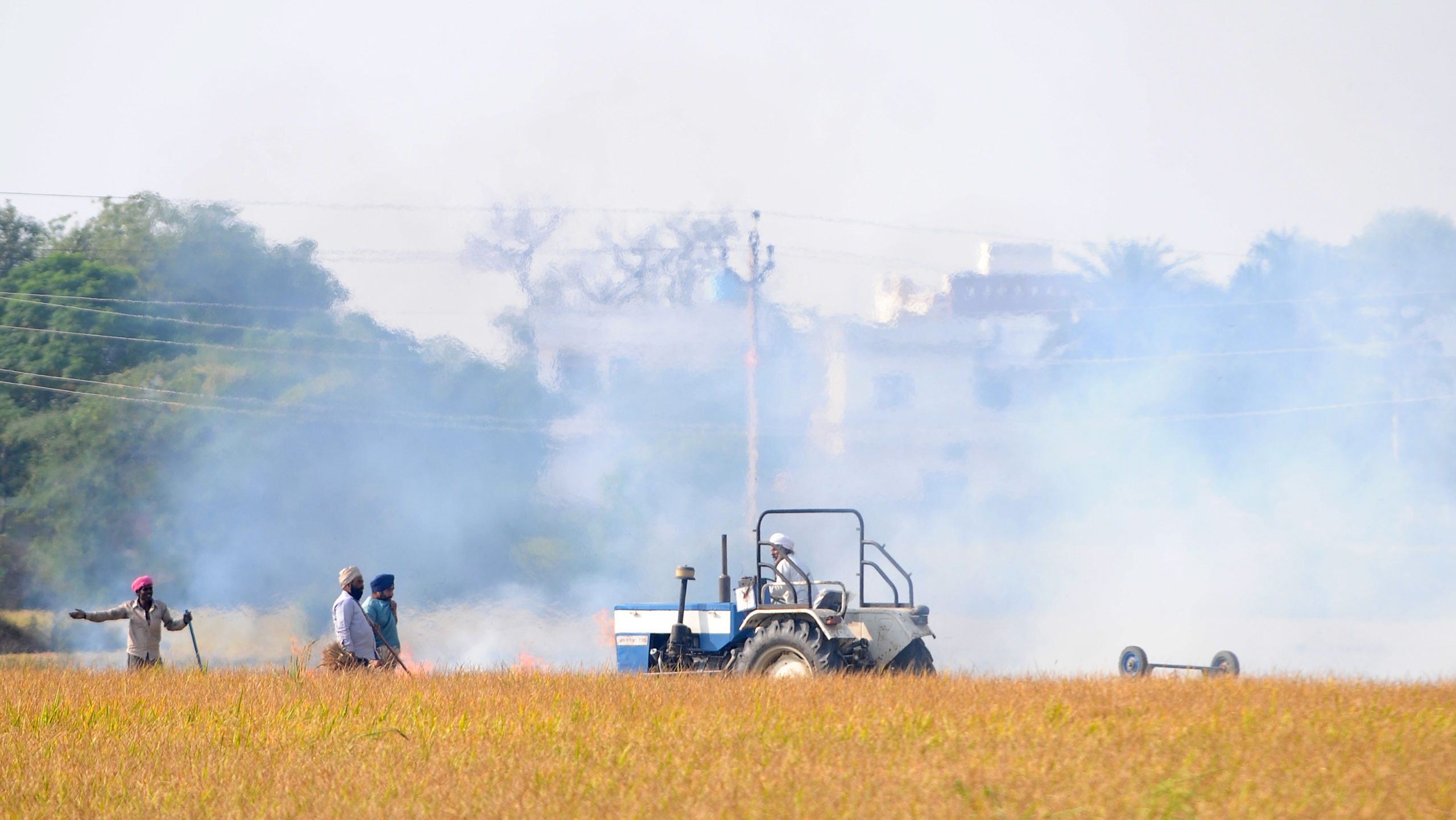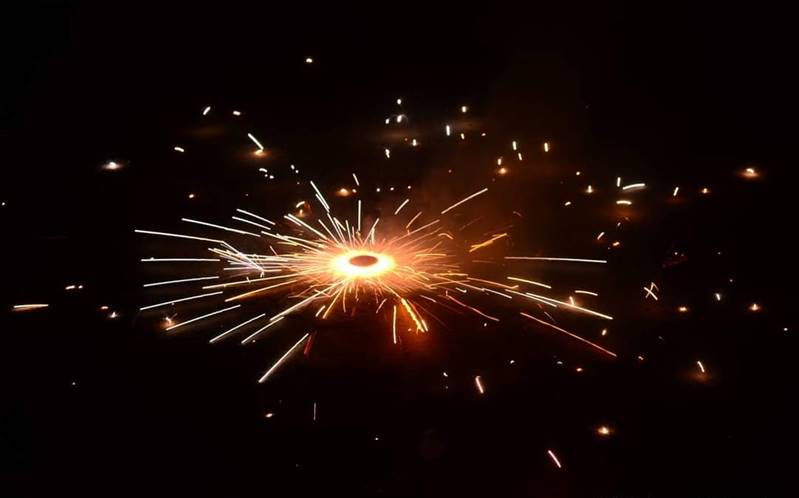Ahead of Diwali, Delhi’s air quality dips to ‘very poor’ category; likely to remain so till Nov 6
Delhi’s AQI slipped to the ‘very poor’ category on November 2 and as per the India Meteorological Department the air quality can improve from November 7 onwards with strong winds. Both Delhi and Haryana have banned firecrackers, including green crackers. Meanwhile, stubble burning cases have recorded a rise in the neighbouring states of Punjab.


Delhi’s air quality index (AQI) will remain in the ‘very poor’ category on November 3 and 4, the Air Quality Early Warning System for Delhi indicated in its morning update today. This air quality slipped to the ‘very poor’ category yesterday on November 2 on the first day of Diwali festivities on Dhanteras. The main Diwali festival is set to be celebrated across the country tomorrow on November 4.
The AQI has already crossed 300 in several parts of Delhi with areas such as ITI Jahangirpuri and ITI Shahdara recording an AQI of 337 and 367 respectively.
As per the Central Pollution Control Board (CPCB), an air quality index between 301 and 400 is considered ‘very poor’, and can cause ‘respiratory illness upon prolonged exposure.’ Every year during the Diwali festivities, air pollution in the national capital region (NCR) of Delhi peaks owing to various factors including stubble burning and bursting of crackers.
Also Read : Stubble Trouble: Air quality dips in Delhi; spotlight shifts to farmers in Punjab and Haryana
According to the India Meteorological Department (IMD), the average wind speed in the NCR is less than 10 kmph (kilometre per hour), and low wind speeds do not disperse pollutants. The forecast predicted for the following days states that air quality can improve from November 7 onwards with strong winds. The Met department has predicted strong winds on November 6 and 7.
The contribution of biomass (paddy crop stubble) burning in PM2.5 concentration is likely to be less than five per cent on November 3 and 4 as winds are not favourable for transportation of pollutants from farm fires, as per the Air Quality Early Warning System. However the change to the northwest direction of wind in the upcoming days will make it favourable for the pollutants from farm fires in Punjab and Haryana to make their way to Delhi.

Spike in stubble-burning cases in Punjab
Pubjab has witnessed a rise in stubble-burning cases since November 1 which is when the sowing season of wheat officially begins in the state. In the last three days, the state witnessed 7,692 stubble-burning cases which is 43 per cent of such fires recorded in the states between September 16 and November 2.
As per the data provided by the Punjab Remote Sensing Centre of Punjab Pollution Control Board, 17, 921 stubble-burning cases were recorded in the 48 days period. On November 2, at least 3,001 fires were recorded. Maximum fire cases (516) were reported from Firozpur whereas Pathankot only recorded one case.
Delhi’s air is highly influenced by the stubble-burning cases that take place in Punjab and Haryana. While this year, the advent of Delhi’s winter was marked by cleaner air in comparison to previous years however an analysis released by Centre for Science and Environment (CSE) on October 23 had stated that winter may experience a severe peak in smog since farm stubble fire counts may get concentrated due to the delayed effect of the rains.
Also Read: Severe peak in winter smog expected in Delhi, quick action required to counter this: CSE Report
In the report titled ‘Winter is coming: Understanding pre-winter air pollution baseline in Delhi-NCR’, Avikal Somvanshi, the programme manager at the Urban Data Analytic Lab at CSE had stated that usually the smog that occurs in the end October and the beginning of November is driven by stubble burning in Punjab and Haryana however, the delayed monsoons this year stalled the stubble burning, he pointed out.
“This implies that the stubble will be burnt in a concentrated manner, at the end of the month. The quantum of smoke coming to Delhi would be in higher concentration which will lead to a peak in smog. Immediate action needs to be taken to counter it,” Somanshi added.

Diwali without crackers for Delhiites, yet again
Delhi Pollution Control Committee on September 15 had issued a complete ban on the sale and bursting of firecrackers in the national capital till January 1, 2022 . This included a complete ban on all types of firecrackers, including green crackers.
The Delhi government started a new campaign Patakhe Nahi, Diye Jalao (Light diyas instead of burning crackers) on October 27 in order to urge people in Delhi to light diyas instead of burning crackers. However despite the ban on sale of crackers, firecrackers are being transported illegally to the national capital. As per news reports, Delhi Police had arrested two men in North Delhi’s Sadar Bazaar with over 500 kg of illegal firecrackers.
Delhi’s neighbouring state, Haryana has imposed a ban on the sale or use of all kinds of firecrackers in 14 districts in the National Capital Region (NCR) and imposed restrictions in other parts. The districts with a total ban on firecrackers include Bhiwani, Charkhi Dadri, Faridabad, Gurugram, Jhajjar, Jind, Karnal, Mahendergarh, Nuh, Palwal, Panipat, Rewari, Rohtak and Sonipat, as per the order issued by the State Disaster Management Authority.
Also Read: Calcutta High Court bans sale and use of firecrackers during Diwali
The Karanataka as well as the Rajasthan government have allowed the sale and bursting of only green crackers during Delhi.
The Calcutta High Court had banned the sale, purchase, and use of all firecrackers during Diwali, Kali Puja and other festivities to check air pollution however this blanket ban on firecrackers was set aside by the Supreme Court on November 1.

